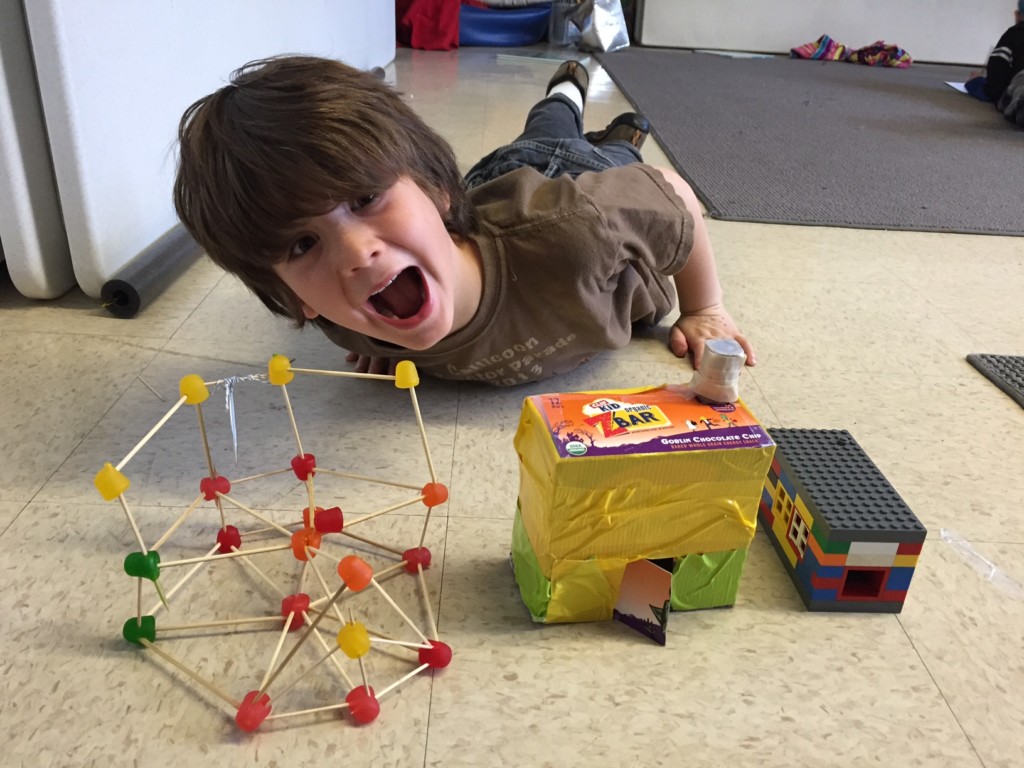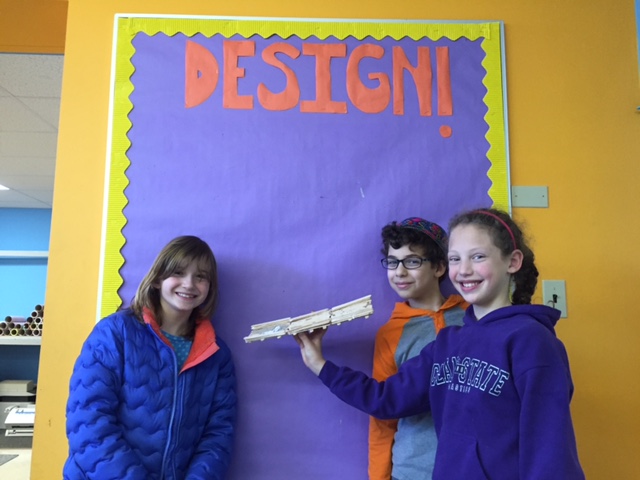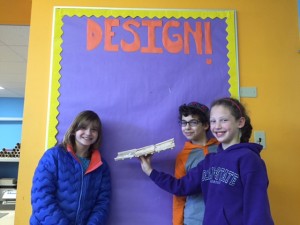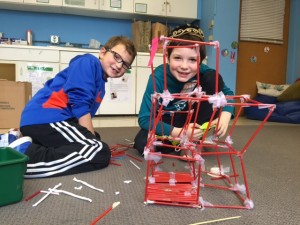We’ve all heard the story The Three Little Pigs, but have you read The Three Little Javelinas? In PreK, kindergarten and first grade, we read The Three Little Javelina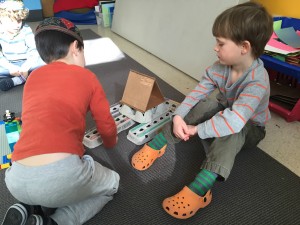 s by Susan Lowell and talked about how the two stories are similar in some ways and different in others. In both stories the first house gets blown down very easily. The second house is a bit stronger, but not by much. The third house, however, won’t budge! In the design lab, we recreated the three houses that appear in both of the stories.
s by Susan Lowell and talked about how the two stories are similar in some ways and different in others. In both stories the first house gets blown down very easily. The second house is a bit stronger, but not by much. The third house, however, won’t budge! In the design lab, we recreated the three houses that appear in both of the stories.
We explored different materials in the design lab and created our own houses that represent the three houses in the stories. Many of u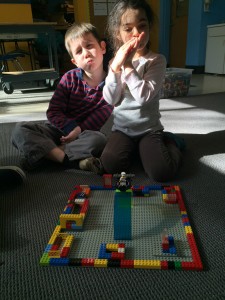 s noticed that by utilizing the Design Thinking tactic of rapid prototyping, we could create better, stronger structures. Rapid prototyping is used by both adults who use design thinking concepts in the workplace and children at JCDSRI! It means that we build things quickly in order to learn from our mistakes and to move onto the iteration and improvement stage of the process.
s noticed that by utilizing the Design Thinking tactic of rapid prototyping, we could create better, stronger structures. Rapid prototyping is used by both adults who use design thinking concepts in the workplace and children at JCDSRI! It means that we build things quickly in order to learn from our mistakes and to move onto the iteration and improvement stage of the process.
Next, we tested our structures by blowing a hair dryer on them. Of course, children gave fair warning by yelling, “I’ll huff, and I’ll puff, and I’ll blow your house down!” Finally, we decided what types of characters (or objects) might be in our own Thre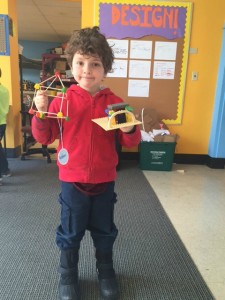 e Little somethings stories!
e Little somethings stories!
In PreK, we decided that we all wanted our story to be The Three Little Fish and the Big Bad Crocodile. One of our Lego structures had some interesting safety features, including a trap station to catch the crocodile and a lookout tower.
Kindergarteners decided that they wanted to create their own story titles. In the end, however, we noticed that we liked the titles of our friends. Eden, Millie, Ben, Eshel, and Meital created a story titled The Three Little Socks and the Shoe. Nathan, Bentzi, and Zemer titled their story The Three Little Scooby Doos and the Monster. Malcolm, and Aeden decided on The Three Little Monkeys.
First graders were proud to create their own individual story titles:
Naftali… The Three Little Ships and the Big Bad Star Destroyer
Maya… The 100 Little Army Ants and the Tilting Earth
Simon… The Three Little Snakes and the Lion
Elie… The Three Little Basketball Players and the Big Bad Basketball
Jude… The Three Little Leaves and the Grasshopper
Hannah… The Three Little Dwarves and the Giant
Moshe… The Three Little Squares and the Big Bad Triangle
Ella… The Three Cupcakes and the Cake
Maor… The Three Little Snakes and the Big Bird
Ayden… The Three Little Critters and the Big Bad Critter
Hadas… The Three Little Bunnies and the Cat
